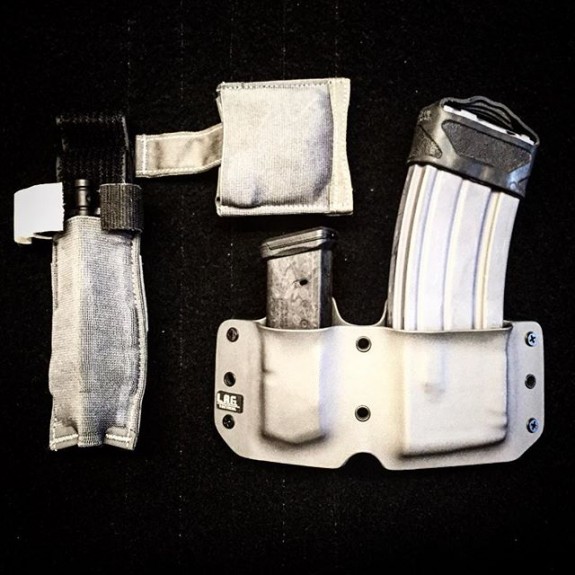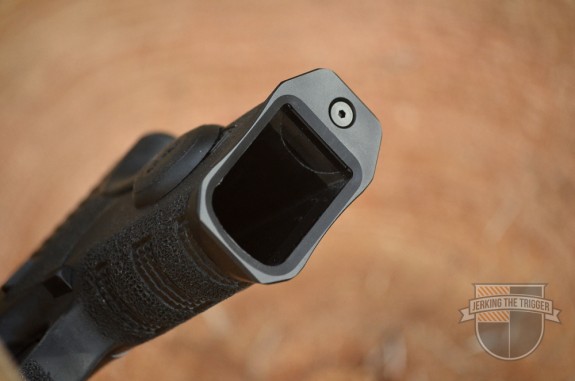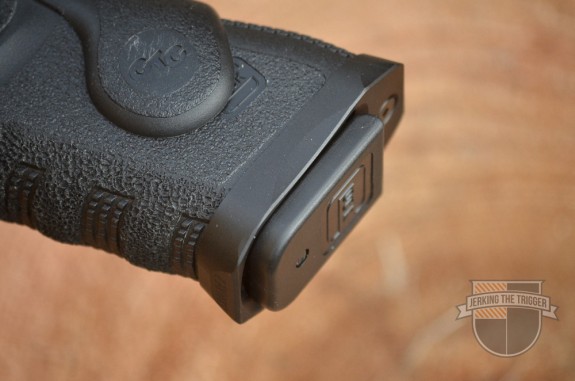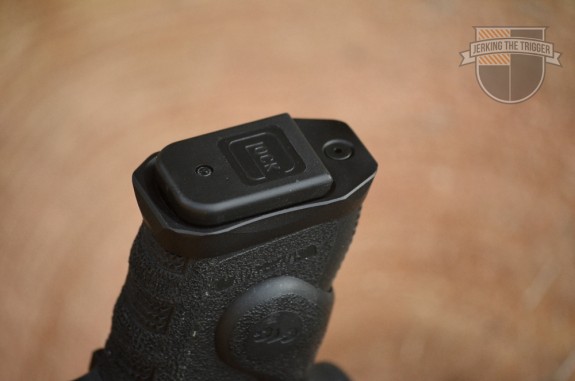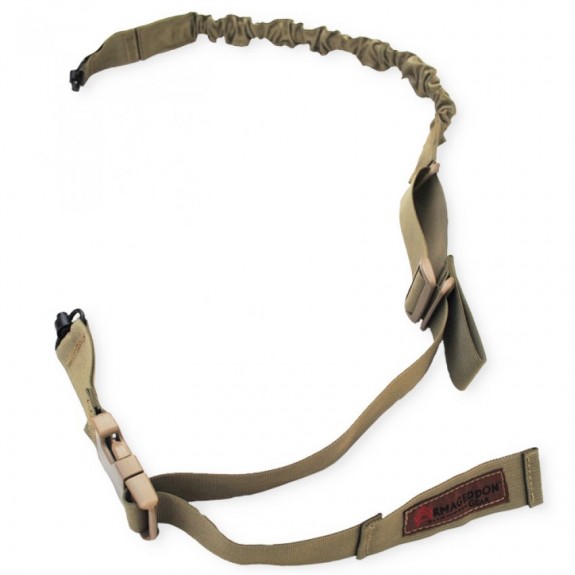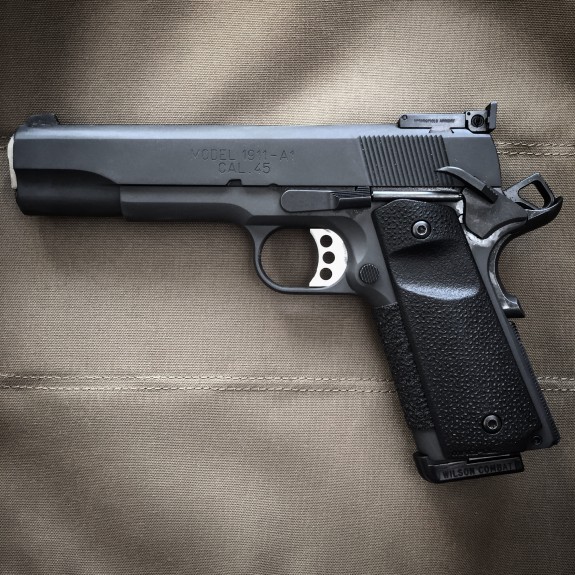I have been using a Black Rhino Concealment (BRC) TCSL Holster since August of last year. It has been my most commonly worn holster around our property and a frequent range companion.
Overview
The TCSL is a pancake style holster made from Kydex. The TCS is their standard holster and the TCSL, which is the subject of this review, is the light bearing version.
The TCSL features BRC’s 90/10 mold. Most kydex holsters mold approximately half the gun into one side of the holster and half the gun into the other side. BRC molds the gun so that it is mostly contained by the outer layer of kydex. This allows the inner layer, the layer closest to the wearer, to be only lightly molded which presents a flatter, more comfortable surface to the wearer’s side.
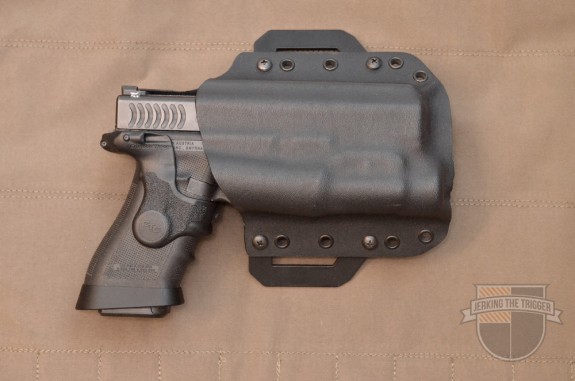
Observations from Use
I want to camp on the 90/10 mold that BRC uses since that is what makes this holster unique in the market. I have noticed that it is very comfortable both inside the waist band and outside the waist band. It was anticipating that it would mostly make a difference when being worn inside the waistband but I was surprised to find that it reduced hotspots outside the waistband as well. I would say this is an extremely comfortable holster – especially for an all-Kydex construction holster.
BRC does not provide adjustable retention on their TCS holsters and I like that. I generally prefer holsters without adjustable retention adjustment screws seem to do nothing but loosen over time. The retention is more than sufficient. You could probably call it moderate. It would be nice if BRC could let the user choose the degree of retention when they order their holster to accommodate those who might lighter or more aggressive retention.
A good kydex holster is molded so that it feels like it only retains on the trigger guard or, in the case of a light bearing holster, it should retain on the light. This is what allows the distinctive click-in and click-out that good kydex holsters exhibit. Poorly molded holsters can causes hitches in the draw or make it more difficult to insert the handgun. The TCSL is a well molded holster. It clicks in positively and release the handgun quickly. BRC has done a good job of blocking around the light while also providing sufficient trigger coverage. The sight channel is generous.
BRC’s sweat guard runs all the way up the full length of the slide so it provides good coverage. However, it is also cut away fairly aggressively to allow a good grip on the handgun right out of the holster.
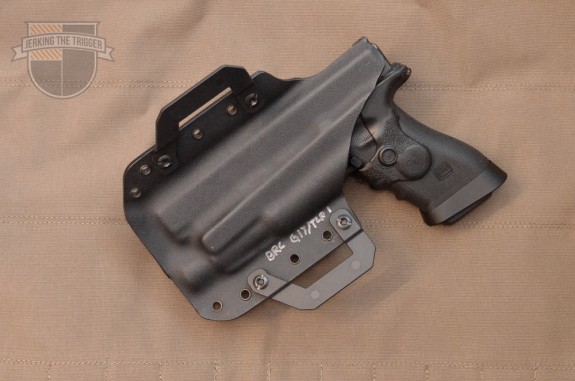
The back of the TCSL is lightly molded for comfort. There is even less impression into the back panel on the non-light bearing TCS holster.
BRC uses injection molded wing-like belt loops. These wings do good job of holding the holster in close to the wearer and spreading the weight of the gun. They are very stable and have held up well to several months of wear.
The fit and finish is very good on my TCSL with one exception that does not effect function. The edges are lightly rounded and well polished. The eyelets are consistent and well formed. The mold has acceptable definition. The issue is where the kydex is folded to cover the lens of the light. It covers completely but because of the 90/10 mold, this bit of kydex must be folded over quite a bit which leads to bit of a sloppy look. It doesn’t look very clean but it has ZERO negative effect on function. Many makers do not cover the lens completely to avoid this but BRC chooses to provide full coverage.
I also want to share a story to give you an idea of the types of guys you are dealing with at BRC. I needed a holster for an East German Makarov that was given to me by my grandfather. I have been looking for one on and off for years. There just aren’t a lot of choices unless you want junk. I have asked several holster makers over the years if they happened to have a Makarov to mold a holster with and was always greeted with a “No. Sorry.” Geno at BRC said they didn’t have one but that he could make something happen. He then proceeded to call people he knows to track down a Makarov. The result is that I have one of their TCS holsters for my cherished East German Makarov. BRC takes care of customers.
Wrap Up
The Black Rhino Concealment is a very comfortable holster thanks to the 90/10 mold. While my example does have a fit and finish issue, the holster functions exactly as it should. My holster has served me well and it has become my go-to outside the waistband holster.
If you are one of those shooters who finds kydex holsters a bit uncomfortable, you should definitely check out Black Rhino Concealment. They might change your mind.
Disclosure: This holster was provided to me free of charge by Black Rhino Concealment for review.
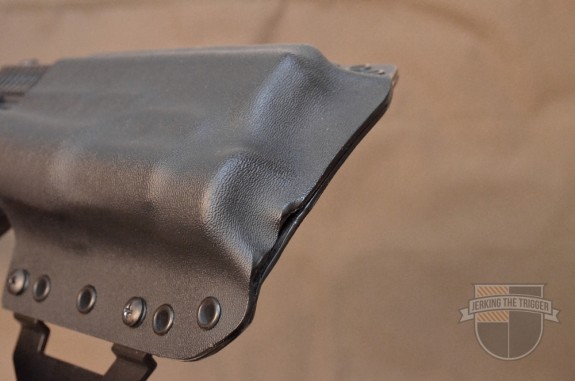
This image shows the 90/10 mold. The majority of the gun’s width is molded into the holster’s front panel. It also shows the fit and finish issue mentioned earlier in the review.

